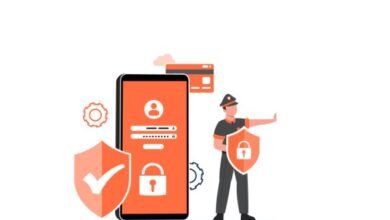What Security Can You Get Out of Your Mobile App Using App Wrapping and App Sealing?

Keeping mobile applications secure is more important than ever in the current digital environment. To safeguard their users and data, developers and businesses need to give strong security measures top priority due to the growing sophistication of cyber threats and the growing volume of sensitive data handled by mobile apps. Two methods that give additional levels of defense against potential vulnerabilities and assaults are app sealing and app wrapping, which can greatly improve mobile app security. For developers to properly secure their applications, they must comprehend these techniques and how they affect mobile app security.
An extra layer of protection is added to an already-existing mobile app without affecting its essential features, a security tactic known as “app wrapping.” A security wrapper or a collection of security policies that impose particular security measures is usually applied to the app during this procedure. App wrapping’s primary goal is to strengthen the app’s security posture by adding different security measures to the wrapped version of the program.
Protective elements:
Organizations can integrate security elements that are not inherent to the app thanks to App-wrapping, which is one of its main advantages. Data encryption, secure communication protocols, and extra authentication methods are a few features that can be added with App-wrapping. Entities can safeguard confidential information and guarantee its confidentiality throughout transmission and storage by implementing these security protocols via wrapping.
Securing security policies across a variety of apps without needing to modify the app’s source code is another benefit of App-wrapping. This is especially beneficial for businesses that use third-party apps or deploy several apps. Through the implementation of security policies, companies may guarantee that all apps adhere to their security requirements and maintain uniform security standards.
See also: Finding Cheap Botox Deals: How To Make An Informed Decision For Your Skin
Encryption defense:
Digital signatures are added to confirm the validity of the program, and the binary code and related resources are encrypted as part of the app-sealing process. Ensuring protection against reverse engineering and code tampering is a primary advantage of app sealing. App sealing increases the difficulty level for attackers to examine or alter the behavior of the app by encrypting the app’s code. By adding another degree of security, you can discourage potential attackers from trying to take advantage of holes in the program or access its features without authorization.
App sealing also has the potential to stop unapproved app distribution. App sealing guarantees that only authorized versions can be loaded and used on user devices by utilizing cryptographic signatures. To protect users’ security, this can aid in stopping dishonest actors from disseminating tampered or fake versions of the program.
Various facets of app security:
Though they accomplish different goals and cover various facets of app protection, app sealing, and App-wrapping are useful strategies for improving mobile app security. App sealing seeks to prevent tampering and unauthorized alterations to the app’s code and resources, whereas App-wrapping concentrates on integrating security features and policies inside the program. These methods can offer a thorough method for protecting mobile applications when combined.
Several variables, such as the app’s architecture, the organization’s security requirements, and any potential dangers related to the app’s deployment, must be carefully considered before implementing App-wrapping and app sealing. To avoid creating any vulnerabilities or performance problems, developers must make sure that the wrapping and sealing procedures are carried out correctly.
Satisfying regulatory requirements:
App-wrapping and app sealing have many basic advantages, but they can also be very helpful in boosting user trust and complying with regulations. It’s imperative to make sure mobile apps follow compliance standards for businesses in industries like banking and healthcare that have strict data protection laws. Encrypting data and implementing safe access controls are just two examples of security measures that App-wrapping can integrate to help with compliance. This can be useful to an organization that wants to protect sensitive information and should help to win the confidence of the users by a demonstrated determination to maintain these standards. Users are growing more and more skeptical as to when one promises to protect their data it is safe and sound.
Because app sealing strengthens the app’s defenses against dynamic attacks, it further improves security. App sealing offers a defense technique that can change to counter the sophisticated ways that attackers are finding new ways to exploit vulnerabilities. App sealing uses cryptography to make sure that encrypted material is safe and inaccessible, even if an attacker manages to obtain access to the app’s binary code. Maintaining the integrity of the application and making sure that user interactions stay safe over time depend on this continuous protection.
By giving insight into possible risks, appsealing and wrapping both strengthen a system’s security posture. Organizations may update security rules in real-time and respond to new threats by centrally monitoring and managing them using App-wrapping. By utilizing digital signatures and integrity checks, app sealing adds an extra degree of protection against manipulation by enabling the verification that the app has not changed from its trusted, previous version.
Consumer assurance:
App-wrapping and app sealing, in short, augment safety for mobile apps while simultaneously bolstering user confidence and compliance. Utilizing these strategies guarantees that mobile apps stay safe, dependable, and robust against an ever-changing array of cyber threats as they develop and become an integral part of the digital interactions.
Organizations should also upgrade their security protocols regularly to counter new attacks and stay up-to-date on the newest advancements in mobile app security. Organizations that want to remain ahead of possible dangers and effectively safeguard their mobile applications must modify their security methods as cyber threats continue to change.
Conclusion:
Ultimately, app sealing and wrapping are useful methods for improving the security of mobile apps. App sealing protects the integrity of the app’s code and resources via cryptography, while App-wrapping adds a layer of security by enacting security features and policies without affecting the app’s essential operation. Through the implementation of these strategies, developers, and organizations can enhance the security posture of their applications and protect confidential information from any attacks. Putting strong security measures first is crucial for guaranteeing the protection and privacy of users and their data, especially since mobile applications are still crucial to the digital lives.







